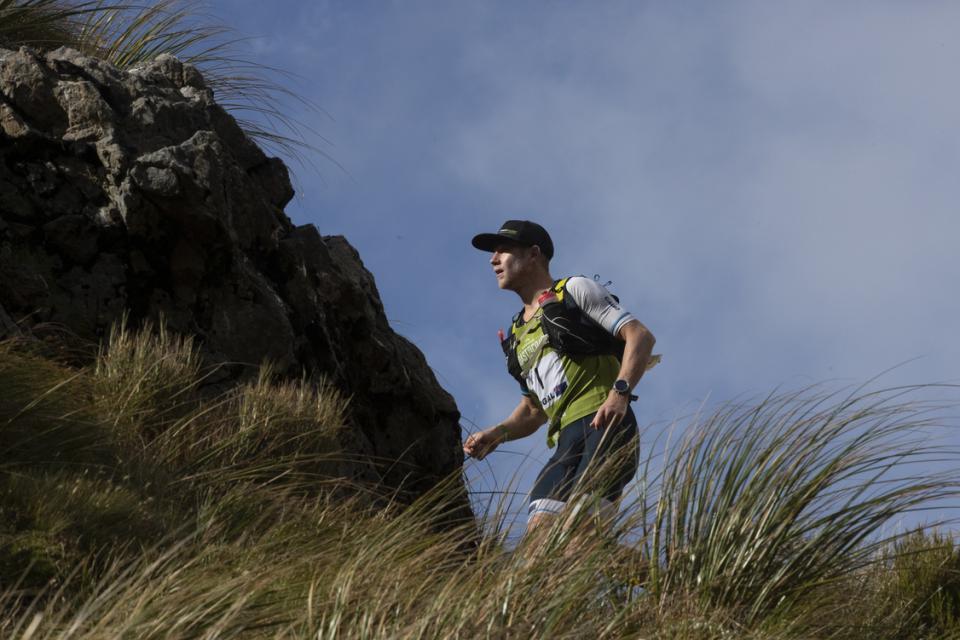Finding a firm definition for recovery has always been a question on my mind, especially having spent 20 years in Meditech and 40 years as an endurance sport athlete and coach.
In reality, recovery is subjective for every person, much like music and art. In the case of someone plagued with excessive swelling — symptomatic of a vascular condition such as lymphedema, diabetes or DVT — recovery can mean a reduction in swelling, improved mobility and an overall enhancement in quality of life.
From a weekend warrior or world-class athlete’s perspective, recovery would mean faster healing, resuming training after a significantly shorter resting time and, of course, the magic of faster gains or improvements. In the end, great athletes understand this objectivity about recovery — it is only during this stage where the gains and improvements are made.
We attempt to share some tips that we have learnt over the years that we hope will benefit you in the long run.
Rule #1: There...Are...Rules!
…And yes, they apply to you!
Here are several points learned from personally competing, coaching and talking with our Ultra running community, with everyone from weekend warriors to elite athletes of all ages contributing to sustainable training, racing and overtraining.
Here are those pointers:
- If injury and illness are the burglars, over training unlocks and opens the front door.
- Our physical capacity for training is limited.
- Life stress is equal to body stress.
- High-volume, year-round training, however, low intensity, is grossly unsustainable.
- Sleep and Nutrition are the foundations of recovery
- Regular, prolonged rest is required after training
- Running causes the muscles to break down and form micro-tears, which need to be repaired to get stronger and faster. This breakdown of muscle tissue is called catabolism. Beyond 1 hour of running, approx tears muscle down and can make your structures weaker and imbalanced. Runners >40 years of age are particularly at risk due to the declining muscle mass of aging.
- Racing must be limited.
- The lag time for unsustainability is two to three years and normally results in people being forced out of the sport they love through injury or illness.
- Elite runners training and racing unsustainably are taking a huge risk and set a bad example for all.
- Ultrarunning is a sub-threshold activity for most, and the bodies primary fuel is fat. Many carbohydrates are inflammatory, which inhibit recovery, so becoming more fat-adapted will be beneficial for both running further and recovering faster.
- Recovery tools and their appropriate frequency of use are invaluable
- An ounce of prehab is worth a pound of rehab – fix it before you break; prehab keeps you in the game.
- investing in running gait analysis from a professional including strength work and having the correct shoe prescribed is invaluable
- regular scheduled visits to professionals such as chiro, osteo, physio, podiatry are essential prehab
- prescribed regular strength and conditioning pays dividends
- training makes you worse, recovery makes you better If training is a daily dose and your recovery needs to match.
- DNA active testing (such as Nordic labs) – to identify the best time of day to train and your predisposition to soft tissue injuries, and your personal recovery index.
- No matter who you are, the rules still apply.
These concepts govern the big-picture approach to running, but what about the nuts-and-bolts to post-run recovery?
Most ultrarunners start as roadrunners, and accepted rules among road runners include:
- No high-intensity training for more than three days a week.
- Take a rest for a week every three to four weeks of training.
- No short distance racing (5k to 10k) more than once a month.
- No running long-distance marathons more than twice per year.
- Track work and speed sessions are overrated; what relevance is knocking out 3.45/k on the track when your race pace is 5.45/k ? Running drills, on the other hand, should be part of most runs.
- 1 Trail run is worth 2 flat road runs. Running at an aerobic pace on soft, uneven, undulating surfaces creates soft tissue resilience. It builds strength, pulmonary stroke, muscle fiber recruitment, Fat burning (mitochondrial development), and heat tolerance if you run in the tropics.
Yet as soon as we start running ultra distances, similar rules are less applied or accepted. But they are there for a reason, acting as guidelines to promote a strong, sustainable running career. Learn the rules, and follow them.
Rule #2: Don’t Run!
Rule of thumb from the champions;A common rule of thumb is “One day off running for every 16 km raced.”
It’s a hard-and-fast rule that benefits every runner. The keyword here is ‘raced.’ If you're honest with yourself and used an event as a sub-maximal training run, this may not apply. However, this guideline applies to you if the event was a hard, A-race, or a long, taxing 100k or 100 miles. I will add the following:
- If the race was a heavy-vertical and/or a high-altitude event, one day off running for every 10 kilometers raced. ( >150 vertical feet gained/lost per mile)
Many runners out there promote the notion of active recovery, which involves short, easy runs to promote circulation and tissue mobility following hard races. Yet, how does one know if these presumed easy runs are truly easy and beneficial and not inhibiting recovery? There are tools available that will do a better job with no additional damage; we will discuss this later on.
The easy answer is: don’t risk it. Stop running!
Simply put, running is running. Attention to details rules both training and recovery, and if one is looking to truly recover from running, one must, at least for a time, not run.
There are many ways to achieve active recovery, most of which avoid the primary mechanical stressor of running: impact. Impact forces from running produce the primary mechanical stress, and optimal recovery should avoid impact as much as possible.
Let it go. Stop running for a while. Take that time to explore other aspects of your life.
Rule #3: Nature Abhors a Vacuum.
Perhaps the most difficult part of recovery is giving up the very thing that makes up the most of our identity. Running is who we are; it is what we do, with whom we spend our time. Thus, the idea of stopping running is a difficult and frightening proposition for most, but it doesn’t have to be.
Regardless every runner accepts recovery as a vital aspect of the training experience, yet it remains poorly followed or adhered to. We know we need to recover, but what does it mean? How do we decide what recovery means? Along with several other rules, the days-off rule is a great starting point.
But what good is a guideline without commitment? Most runners are prepared to complete a mileage week, workout, run, or race, hardly flinching in the face of physical and often logistical challenges. But what happens to that wherewithal when it comes to recovery? After a major race, recovery is implicit. But then, opportunity beckons:
- Beautiful weather, perfect for the outdoors;
- Optimal trail conditions (devoid of rain, snow, heat, mud, or bugs)
- An invitation to race from friends, or a generous race director.
Suddenly, the savage beast, the underlying drive to move, test ourselves, and succeed, and our desire to soothe it with running comes out, and our will to rest is tested. More often than not, it fails. And just like that, we’re back at it.
Your muscle and joints might feel great after only a day or two of rest, yet those mechanical systems are seldom the most stressed. Internal systems, undetectable to the naked eye–namely the nervous, endocrine, and metabolic systems–are incredibly taxed during a hard ultramarathon and go through wear and tear, which requires prolonged rest periods, often exceeding, several times over, the needs of your legs.
Commit to rest and recovery for a certain period. Based on several deciding factors like age, race, physical condition, etc., and your current needs, decide on a set number of days or weeks to either not run or train minimally. Then, like any other goal, make it public: let your friends (and, if necessary, your social-media following) know of your intentions. Public declaration strengthens resolve.
Stick to your goal. See out the duration of your rest and the aspects of recovery that are seldom as fulfilling as the daily run. Be disciplined in your journey to recovery as much as you are with any other aspect of training, and you will surely see the benefits.
As runs >60 mins put the muscle into tear down mode can contribute to structural weakness and imbalances over time. Time off from running and be reallocated into strength conditioning will pay dividends in preparing you for the next phase of your running. For older runners >40, regular strength work as a part of your week is valuable to keep you in the game long term as maintaining muscle mass for older age groups is important not only for performance but also for injury prevention.
Pretty much every athlete I know can’t sit still and do nothing, so if this sounds like you and restlessness overwhelms you, here’s a strategy to improve the long-term prospects while taking a running break - Prehab, cross-training, freshening and Strength Conditioning.
- An ounce of prehab is worth a pound of rehab – fix it before you break; prehab keeps you in the game.
- investing in running gait analysis from a professional, including strength work and having the correct shoe prescribed, is invaluable
- regular scheduled visits to professionals such as chiro, osteo, physio, podiatry are essential prehab
- prescribed regular strength and conditioning pays dividends (especially athletes >40)
- training makes you worse, recovery makes you better, If training is a daily dose and your recovery needs to match.
- DNA active testing (such as Nordic labs) – to identify the best time of day to train and your predisposition to soft tissue injuries and your personal recovery index.
- Hit the gym – indoors or outdoors
- Hire a coach and Learn to swim, while being a great all body workout, its hypoxic has excellent cardiovascular benefits at low metabolic cost. As a rule of thumb – the worse you are at swimming the bigger the short term cardiovascular benefit.
- Buy a bike –
Spend time with friends while Exploring your neighbourhood, what a great way to freshen the mind while maintaining fitness at a low metabolic cost.
Rule #4: Refuel
Nutrition along with sleep are the foundations of Recovery.
The average runner burns between 600 and 1,000 calories per hour during an ultramarathon, even with liberal eating, far less than half of that is supplanted during the race. One of the tragic ironies of ultramarathon racing is that post-race when we’ve most earned it, our appetites tend to be the weakest, making it difficult to refuel. Refuel early and often: recognize that it takes days and even weeks to replace the nutrients and tissues lost during a long ultra race.
Listen to your cravings! They’re trying to tell you something! Many runners train for health reasons and use running for weight loss and weight maintenance. However, as Smith writes, “I do not try to use a big race effort as a weight-loss strategy as I think this impedes recovery… Indeed, many experts think insufficient calorie intake is a component leading to overtraining syndrome. When your body undergoes demanding physical exertion, it requires a lot of calories both for fuel and for repair.”
Jumpstart repair with nutrients and supplements. Meredith Terranova is no stranger to recovery. In addition to being a competitive endurance swimmer, triathlete, and ultrarunner, Terranova is an experienced dietician who frequently guides endurance athletes in the nutritional-recovery process. For the hours and days iimmediately after a race, she recommends
- 2 grams per kg of weight or more per day of protein. The muscle breakdown is best repaired with protein and making sure you get in the max of amino acids,” that come from liberal protein intake.
- Avoiding simple carbohydrates. While sugar is vital to fuel during the race, it can interfere afterward. It is important to stay away or limit simple carbs (sugar and refined grains) to limit excess inflammation,” as carbohydrates are now being recognized as inflammatory to many-body systems.
- Hydration. This may seem like common sense, but ongoing hydration–immediately and in the days after a major race–is crucial in the disposal of metabolic waste, aiding in digestion and repair of the whole body.
- Watch the trace elements – with sweat loss by running its quite easy to become depleted of trace elements especially magnesium which is highly likely to affect sleep. Aside from taking a good multivitamin, soaking in a bath of Epson salts (sold at most pharmacies or iherb) is a great way of replenishing magnesium. No bath ? No worries use a bucket and soak your legs up to the carves.
- Avoid food with MSG added – it will dehydrate you !
Gain some weight! It is normal–if not outright healthy–to gain weight after a hard race and at the end of a competitive season. Consider off-season weight gain in moderation to be like scar tissue: the body deposits a little more than required to ensure 100% healing, then slowly peels off the extra overtime. Don't be scared to add a few pounds and understand that refueling with healthy nutrients will seldom create excess or unwanted body-fat gains.
Become Fat adapted – carb stored in your body is around 2000 calories whereas fat stored is around 40,000 calories so to develop your fat burning potential to take your further, train at aerobic pace on an empty stomach. This should be a progressive approach to allow adaptation over time. Consume Fats! As far as fat is concerned, both runners and the general population are beginning to recognize the importance of fat intake as part of optimal fuelling as well as recovery. Prolonged exercise bouts of several hours tax the nervous and multiple organ systems to a great degree.
And these organs are comprised largely of fat! For example, the vast majority of nerve cells are comprised of fat! Also, fat is an essential nutrient for enzymes, neurotransmitters, and other physiological systems.
Terranova points out another purpose for fat: nutrient absorption. “Fat should always be in your diet for absorption of fat-soluble vitamins. [Fat is] even more important post-race, when your body is broken down and you are needing to maximize nutrient absorption.”
Don’t skimp on fat but be sure your fats come from relatively healthy sources. This includes meats, dairy, and plant sources. Avoid processed foods, including processed meats and cheeses and refined grains that may contain partially-hydrogenated fats.
Listen to your cravings. Satisfy the urges that naturally come and are well-earned after a hard race or long competitive season. But take steps to ensure that you satisfy those urges with the healthiest options or variations out there. Chances are, those urges are the brain telling you the exact nutrients it requires to properly recover.
Rule #5: Recovery Modalities to Get the Blood Moving!
While rest is very important, so is restoring motion to muscles, joints, and everything in between. Running should be mostly avoided at first, there are myriad options to get and keep things moving.
Stretch it out! Let’s face reality: most runners don’t stretch. And that’s okay. Usually. When asked by clients, “What do I need to stretch,” my answer is, “Whatever needs it.”
That said, in training when the soreness is minimal, so may stretching be. But when stiffness and soreness post-race is at their peak, prolonged and frequent stretching is recommended.
Here are a few key areas to stretch include:
- Hip flexion and extension;
- quadriceps and hamstrings;
- Calf and shins; and
- Back and trunk flexion, extension, side-bending, and rotation.
Practicing yoga with an emphasis on gentle mobility is a terrific way to achieve guided stretching from an expert as well as accountability to get it done!
Work it out, modalities and frequencies;
- Massage, skilled tissue mobilization from a licensed massage therapist can restore proper mobility within a muscle (microfibers) or between them, by restoring and improving fascial mobility on the tissue surrounding muscle bundles and groups. Massage guns and foam rolling are similar to breaking down scar tissue and lengthening muscles out that get shortened due to repetitive movements. The frequency is once or twice a month for massage and once a week for the other modalities, although beneficial downside is you are likely to be worse before better due to scar tissue breakdown.
- Ice is a contentious subject and most modern-day opinions are that it is beneficial for trauma injuries such as twisted ankle or swollen knee – ice controls internal bleeding and is a form of pain relief. Ice on the other hand should not be used in non-trauma recovery as it restricts blood flow and delays inflammation which is the first phase of healing/recovery.
- Hot and cold contrast therapy, saunas, red light saunas have their benefits for recovery and are particularly beneficial towards autophagy - the removal of dead cells to make room for new growth and repair.
Compression
- Benefits of Static Compression Socks
Static forms of compression recovery have remained a fashion trend in the fitness industry. Whether you are at the gym or cycling through the city, spandex is everywhere.
Research has shown limited benefits on recovery due to the static nature of the garments and limited pressure ranging from 6 to 20 mmhg.
Results of a recent study revealed that the higher levels of compression yielded higher levels in performance, particularly with active compression (IPC)
Benefits of IPC (Intermittent Pneumatic Compression)
The primary mechanism for the effectiveness of IPC is that it enhances circulatory and arterial blood flow via the intermittent inflation of boots. Typically, intermittent compression is 10 x more powerful than compression garments, and it's the milking action or squeezes and release that gives them a considerable edge over static compression garments. IPC has been shown to be beneficial to the warm-down activities of athletes. The removal of waste products may reduce injury risk and the phenomenon of delayed onset muscle soreness (DOMS).
Recovery
Studies have shown that athletes who undergo IPC treatment have a lower heart rate and blood pressure than those who did not use IPC.
Incorporating IPC into your post-workout will enable you to recover faster, which may mean athletes can train more often. Gains or improvements also lock in faster, given the faster recovery time to allow the magic of super-compensation or gains. There are soft tissue benefits also as it is pumped at higher than usual volumes into soft tissue areas such as knees, ankles and hips, promoting soft tissue health.
Warm-up
Eight minutes on an IPC cuff is equivalent to a 30-to-40-minute warmup run/ride. This allows a warm-up at a lower metabolic cost and saves your energy and time, saving valuable energy to allow the athlete to hit the high notes of a given training session.
Parasympathetic System Benefits
Stress is part of our lives and even more so for athletes with a high training load.
Stress be gone; IPC has excellent benefits and a critical beneficial influence over the parasympathetic nervous system.
The parasympathetic nervous system is a part of the autonomic nervous system (our bodies version of autopilot) — the part of your brain that balances and manages and brings everything back to homeostasis.
The parasympathetic is also known as "rest/digest", which handles slowing things down and reallocating blood away from your muscles to vital organs so you can perform internal functions.
It slows down the heart and breathing while relaxing your muscles, which produces vasodilation. It usually results in cold hands and feet. We have talked a lot about this. Still, the thing to understand is that if you can create vasodilation and warm your hands and feet, you activate your parasympathetic handling.
So, these are not isolated things. They all work together. When you increase one, you increase all of this. So, it can have incredibly profound, far-reaching influences and benefits on your health.
The first thing that we want to talk about is digestion. These functions - digestion, immune system, anabolism, and reproduction - are 100% controlled by the parasympathetic.
The sympathetic does not influence these, except that it can shut off the parasympathetic. So, to drive this forward, we need to induce parasympathetic activation.
Anabolism is the process of building things up. Catabolism is breaking down. Anabolism is building up (your body tries to do this all the time).
Forms of Anabolism:
- Growth
- Repair
- Healing
- Replacement of tissue
- Regeneration of tissue
IPC promotes the parasympathetic process. It slows down the heart and breathing. It relaxes muscles and produces vasodilation. It encourages waste elimination and accelerates the delivery of fresh nutrients for healing, recovery and gains. Most people report that they fall asleep during treatment, and this is undoubtedly a significant parasympathetic benefit as anything that influence sleep and sleep quality is gold.
Blood clot prevention
Being immobile for prolonged periods can cause blood to pool in your legs. When the speed of blood flow slows down, it increases the risk of blood clots.
IPC Recovery Systems encloses your legs in a cuff that inflates and squeezes, promoting the natural release of substances in your body that prevents blood clotting. Using Compression Recovery Systems regularly will ensure that oxygen-rich blood flows through your legs.
Portable compression recovery systems are an excellent choice when travelling. However, it is vital to choose a device that offers enough battery life so you don't have to hunt for a power socket while trying to relax and recover.
- IPC – Intermittent Compression Therapy boots promote blood flow with a squeezing and release motion which mimics the body’s natural recovery methods. This modality has been around for more than 30 years and has been proved beneficial for faster warmup, recovery, trauma treatment (in conjunction with cooling pads,) and travel - relief from swelling caused by long haul flights.
IPC is quick and convenient to use, and as there is no tissue damage, this modality can be used multiple times a day, which is valuable for both pre-training warmup and post-training recovery. IPC has been reported to improve sleep due to the IPC triggering the bodies Rest and Digest mode (parasympathetic healing system) to create the right response to the nervous system, Internal systems, endocrine, metabolic systems and hormonal response to promote recovery, healing and gains.
Get on your feet. Critical to his ability to complete–let alone conquer–the Grand Slam of Ultrarunning was his ability to actively recover, engaging in light activity to promote blood flow and tissue mobility while letting vital internals systems rest:
Walking and hiking are great ways to get the blood flowing to your leg muscles and speed recovery with low-impact exercise. Cross-training at a low intensity is also good, such as cycling or swimming, but an elliptical (or ElliptiGO if you want a view while you exercise) is the most similar to running. Keep the metabolic, nervous, and endocrine stress low but still allowed him to maintain strength and range of motion.
The same applies for general recovery: move the body, or use tools that move the blood for you to stimulate the Rest and Digest systems but keep the impact and physiological stresses to a bare minimum.
Rule #6: Go to Bed!
We all know that sleep is important to our well-being, but few if any of us know why. Studies on the resting state show that the primary purpose of sleep is to rest, restore, and repair the nervous system. And since the nervous system is functioning at max capacity for hours on end during an ultramarathon, resting it–and with it, the rest of the body–is paramount.
Individual sleep needs vary, but the consensus concludes that we need close to eight hours of sleep per night, with anything under six hours regarded as harmful in the long term. We are all different, but after an ultramarathon race, I posit a new hard-and-fast rule:
- Sleep one extra hour per night daily for every 10 miles raced.
- Measure sleep quantity and quality, including REM and Deep sleep
- Keep your bedroom cool, dark and quiet for best results.
- Using IPC before bed in many cases promotes sleep quality improvements.
That said, one should sleep an extra hour per day for at least 10 days after a 100-mile race. This could come in the form of a nap, an early bedtime, or not having to wake early to run. Even if you’re not fast asleep, simply getting off one’s feet constitutes vital rest.
Rule #7: Turn It Off
What is ‘it?’ A lot of things:
Your brain, while it is crucial to listen to one’s body, can often send mixed signals, especially when deciphering the needs of the body versus the whims of the spirit. Our competitive drive can speak loudly after a race, whether we run well or not.
If we have a good race, we may be primed to keep going: to continue to train, to work even harder, so we can run even faster. But if we race poorly? We’re often primed to ‘start over’… which frequently drives us to–you guessed it–continue to train, to work even harder, so we can run faster!
Roes describes well this tug of war between body and spirit: “We very much need a day (or more) off, but we are emotionally driven and nourished by our sport, and we convince ourselves that our bodies are telling us that we are plenty recovered from our previous efforts and ready for more. Our ability to reason and to analyse is good at getting in the way of intuition.”
Despite how well–or not well–your race goes, the brain needs to be turned off. The time to compete is over. Know the rules, and follow them, despite what your spirit tells you. Put your energies elsewhere–into recovery and others–and save it for the next build-up.
Social Media. Remember when there were only six 100-mile races in the world? Neither do I, but that used to be the case; now there are over 100 in North America alone. Between races and long adventure outings, chances are, someone is running something awe-inspiring nearly every day.
Avoid the temptation to train, race, or complete any event that is outside the realm of recovery–and that might mean minimizing the self-promotion on social media. Limit how much you’re scrolling through Facebook, Twitter, and Instagram, especially if you recognize a propensity toward FOMO, the ‘fear of missing out’ inside you.
Rule #8: Check Yourself
When it is time to resume running, make sure you touch base with the changes in your running mechanics during your downtime prehab phase. The combination of soreness, stiffness, fatigue and (hopefully) a prolonged break from running can prove to be significant dampers on stride efficiency.
Stiffness begets more stiffness, fix any errors, or a minor inefficiency will create excessive muscle and joint stress, slowing recovery and possibly causing injury!
Rule #9: Start Over
Finally, when it is time to run when all the pieces are in place for a successful return, take your time. Start easy: run a little, and run slowly. Ease back into training. One strategy that I like is to reverse your taper mileage but without the speed work. Work back up to your standard weekly mileage before bringing the speed work back.”
Recognize that, when it’s all said and done, we run well year after year because we recover. Most people underestimate how long it takes to recover from major efforts at long ultras. In my experience, it often leads to burnout or injury, and recovery is one of the most important aspects of training.
Strength and conditioning move to a maintenance phase but is still important twice a week for older athletes.
Embrace the recovery process as a daily dose and a valuable gift–and you will continue to have many fulfilling years running ahead of you.
Rule #10: Frequency and Measuring Recovery
Of all the methods we have discussed, it's generally what is convenient and repeatable that will get done and contributes to sleep quantity and quality and, of course gains. To effectively measure your recovery, just see how your body reacts the next day. If you have a great run, that means your recovery process was successful. If on day three or day four, you do not feel great, you need a rest day, and you needed it yesterday. Of course, full rest days will be a factor to see how well you have recovered. Another way you can measure recovery with devices is to making use of the recovery score. The device used will measure your sleep, daily strain, and heart rate variability. The scores and how you feel after the rest days together will show you how far your recovery went.
Best wishes in your journey to be your best for the long run as you build a repeatable routine with convenient tools to #warmupfaster #recoverfaster and #bringonthegains
For more information visit www.recoverysystemssport.com









